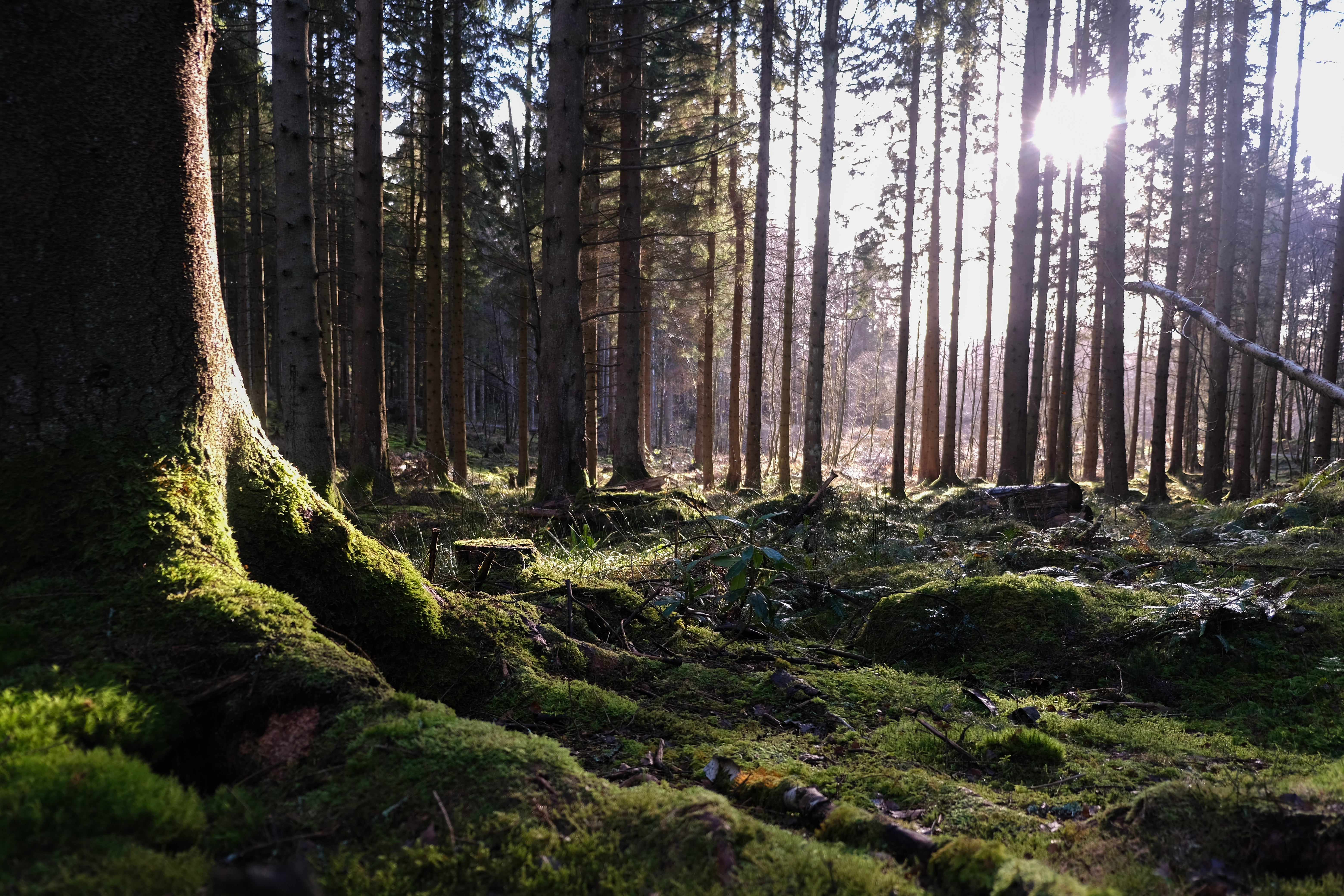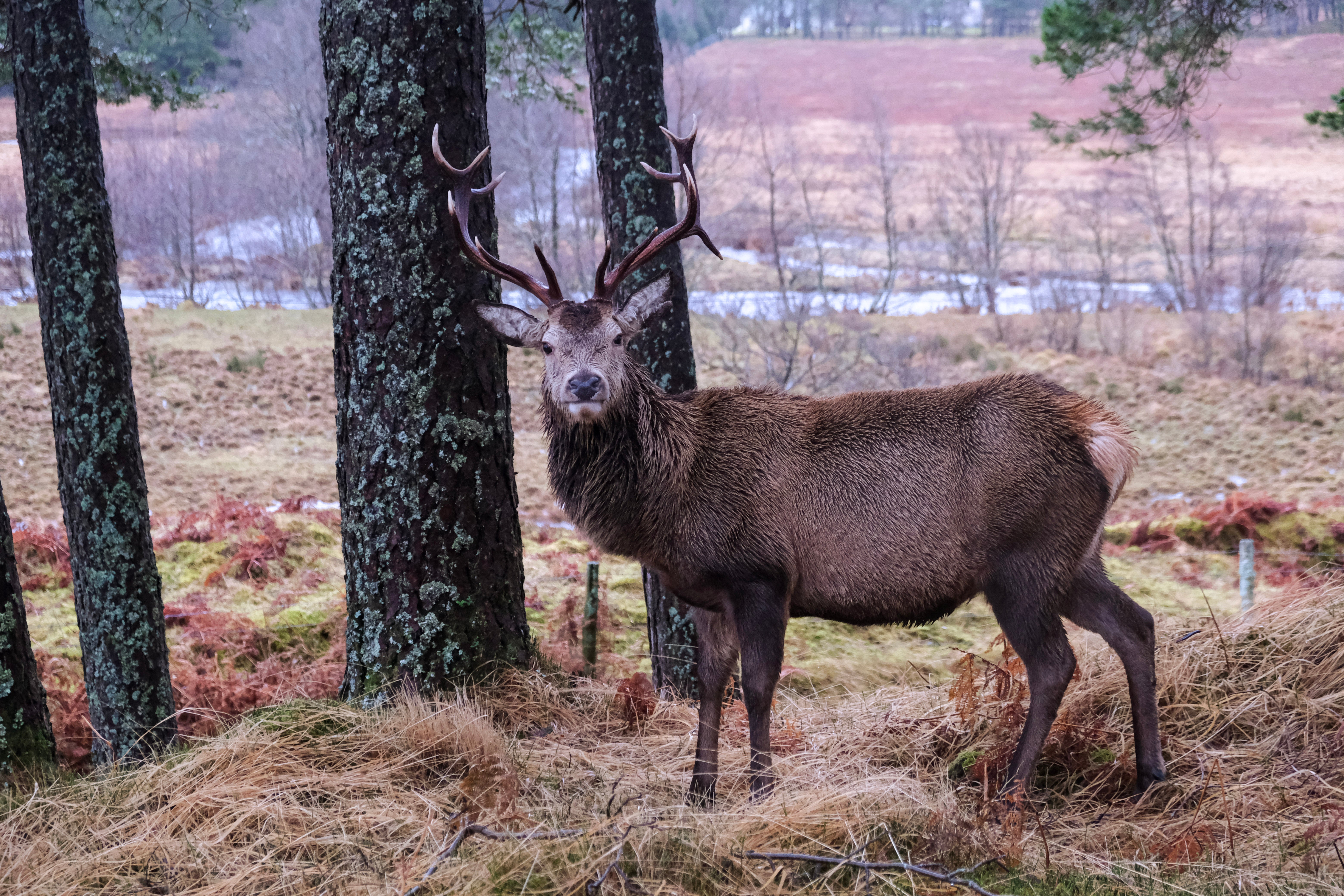Walking Scotland’s West Highland Way in winter
Hiking Scotland’s premier long-distance trail in the colder months allows you to experience the stark natural splendour of the Highlands without the summer crowds, writes Alastair Gill

Graeme, the duty manager at the YHA hostel in Crianlarich, raises an eyebrow as I dump my dripping pack by the door. It’s been dark for several hours already, it’s raining heavily, and he clearly wasn’t expecting any guests. “You’re the first West Highland Way walker I’ve seen for over two weeks,” he says, on learning that I’m walking the 96-mile trail from Glasgow to Fort William in early January.
I hadn’t been planning to stop in Crianlarich, which was a mile off-trail, but the rain had been falling constantly since late afternoon and, although my waterproofs were holding up, the idea of pitching my tent amid a downpour was rather unappealing.
Of course, western Scotland is infamous for its rain. Yet apart from a brief shower during the first day out of Glasgow, the conditions had been good until now. The first night I had camped wild on the approaches to Loch Lomond. The following day, winter sunshine had accompanied me to the summit of Conic Hill, blessing me with glorious views of islets scattered like jewels across the azure surface of the loch. At sundown, as I hiked north along the pebbly shore, the loch was a velvet mirror framed by crisp black silhouettes.

The next day was overcast, the loch a colourless void. As the path twisted around boulders and across babbling burns, snow-dusted crags hovered between reams of cloud above the western shore like spectral citadels. It was only late on the third day, after leaving Loch Lomond behind, that the weather turned.
Yet friends had branded me a masochist for setting off on a six-day trek through some of Britain’s wildest and least hospitable landscapes at the coldest time of the year. Admittedly, the facts supported them. It wasn’t just the inclement weather; many of the guesthouses and hotels along the route are closed in winter, so sleeping options are limited unless you’re ready to rough it. And with temperatures that can drop below zero anywhere along the trail, you need to be both hardy and well-equipped.
So why walk the West Highland Way in winter? It wasn’t a case of making a virtue of hardship, though I welcomed the test of my physical endurance. There was another, more selfish impulse at work – I wanted the trail to myself, to enjoy a prolonged escape from all kinds of social interaction; to feel I was in communion with both myself and nature.
I was looking for a quieter, more reflective experience – and I was finding it, even if it meant walking several hours in the dark each day
This is reason enough to avoid the summer months. The trail’s popularity is soaring, and it now attracts around 120,000 hikers annually. Around 36,000 of these walk the whole route – the vast majority in summer, resulting in crowded paths, packed accommodation, and mounting challenges for trail maintenance. I was looking for a quieter, more reflective experience, and I was finding it, even if it meant walking several hours in the dark each day.
At 7am the next morning in Crianlarich, the rain is still pouring down as I set off uphill in the darkness to rejoin the path. Damp, pine-scented air floods my lungs, the raindrops bright diamonds in the beam of my headtorch. When daylight eventually comes, it reveals a landscape of overflowing burns, waterlogged meadows, and misty, spectral hills.
As the hours pass, the rhythms of my motion lull me into zen-like calm: the beads of rain beating on my hood, the crunch of my boots and the ringing of the metal tips of my hiking poles on the ground. The first three days have tempered my body and it feels strong, resilient, capable of withstanding anything the elements can cast at me.

At Bridge of Orchy, I find the village deserted, everything closed, and the river crashing beneath the 17th-century bridge in full flood, a roiling torrent of black water and whitecaps amid a landscape of burnt umber.
Late in the afternoon, as I pass a copse by the lonely Loch Tulla, movement catches my eye. Among the pines, just paces away, stands a mighty Highland stag, its flanks heaving gently and its sleek chestnut coat damp with rain. We regard each other calmly for a minute or so, before the spell is broken and the beast Sir Walter Scott called “the antlered monarch of the waste” wanders slowly away into the bracken.
Read more on Scotland travel:
That evening, soaking in a hot bath at the Kingshouse Hotel on Rannoch Moor, I reflect on my good fortune. Travelling through these parts in 1805, Wordsworth’s sister Dorothy was unimpressed by the lodgings on offer at the “Kings House”. “Never did I see such a miserable, such a wretched place,” she wrote in her journal. Happily, times have changed, and guests now enjoy a comfort of which she could never have dreamt.
One thing that remains unchanged, however, is the unnerving desolation of Rannoch Moor, a vast treeless wilderness of peat bogs, lochans and heather. The West Highland Way follows the same drovers’ track that Dorothy Wordsworth took, and that had borne my weary legs across this rolling moorland sea by moonlight, the lochans gleaming like bright mirrors beneath scudding clouds.
On the fifth morning, nature finally delivers what I’ve been hoping for – snow. The mighty pyramid of Buachaille Etive Mor looms like a white phantom above the coppery moorland around the Kingshouse, and the landscape is bathed in watery, honeyed sunlight.

As I climb the “Devil’s Staircase” to the highest point on the West Highland Way, flakes begin to fall. The vastness of Rannoch Moor spreads out below, the road to Fort William a distant ribbon beneath the beetling crags of Glencoe. It’s a view on an epic scale rarely found in the British Isles.
At the top, my boots leave deep imprints in the snow. Here, I encounter the first hikers I’ve seen in three days, two ghostly figures who raise their hands in greeting before melting back into the whiteness. Ahead lies the long descent to the mining village of Kinlochleven, but I linger for a while in the soft white silence, snowflakes drifting around me. It is a perfect, beautiful moment.
Read our Scottish Highlands hotel reviews
The last morning finds me camped in a high, desolate valley beside the photogenic ruins of Tigh-na-Sleubhaich, a long-abandoned farmstead. As I make coffee, I reflect on the journey I have made, traversing some of Britain’s wildest scenery in conditions that at times were a stern test of my fortitude.
I was inspired by the haunting beauty of the winter landscape and its gift of profound, elusive solitude
Yes, it was cold, but walking kept me warm, and I was inspired by the haunting beauty of the winter landscape and its gift of profound, elusive solitude. In fact, I could count the number of people I’d seen on the trail on one hand: the two students I’d met in a bothy by Loch Lomond, the walkers in the snow at Glencoe, and a lone rambler in Kinlochleven. All were day hikers.
Would I have traded this for busy trails, midges, overflowing guesthouses and campsites, and a race to bag a spot in a bothy? No, I conclude. I’m glad I did it this way. I hoist my backpack onto my shoulders and set off down the lonely valley that will take me, in a few hours, to Fort William. The sky is grey, and it looks as if rain may be on the way. But at least I’ll get there before dark.






Join our commenting forum
Join thought-provoking conversations, follow other Independent readers and see their replies
Comments